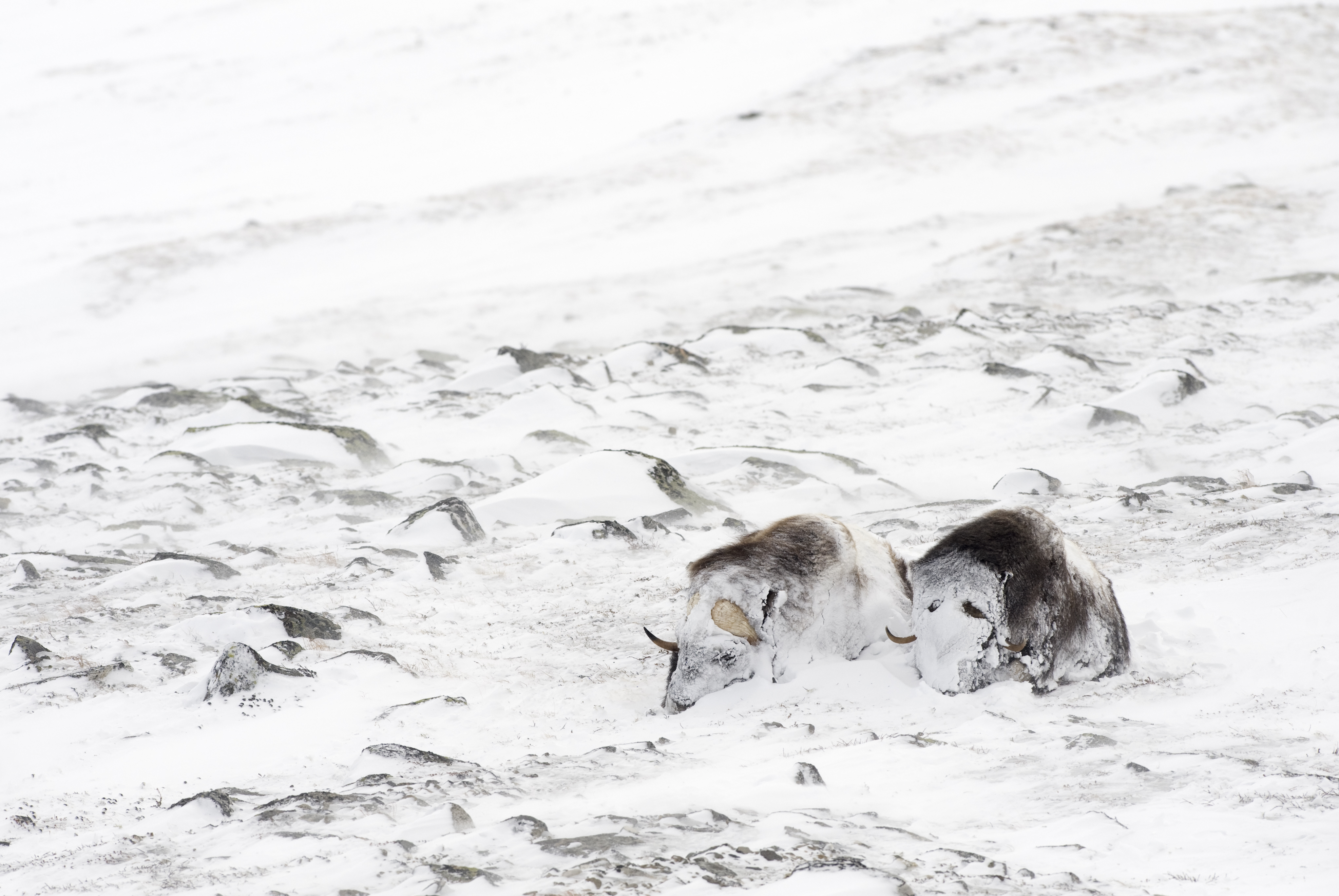Musk ox is a large, hairy wild ox that lives in the cold Arctic plains. The musk ox’s thick coat is its main defense against harsh Arctic weather. Its dark, shaggy overcoat has the longest hair of any mammal. A dense undercoat of extremely fine, soft hair also protects against cold and damp. Broad cloven (divided) hoofs help musk oxen scrape through snow to reach grass and other plants during the long Arctic winter.

Adult bulls (males) measure about 4 to 5 feet (1.2 to 1.5 meters) tall at the shoulders and weigh about 750 pounds (340 kilograms). Cows (females) are smaller. Both sexes have curving horns that meet on the forehead, but bulls’ horns are larger. Bulls use their horns to fight each other during mating season. Cows usually give birth to one calf in May. Explorers once believed—mistakenly—that bulls secrete musk, a valuable ingredient in perfume.
Musk oxen are social, roaming in herds. When attacked by predators such as gray wolves, a group of 10 to 20 musk oxen forms a circle. The largest bulls and cows stand with their massive heads and sharp horns pointing outward, protecting the young in the center.
In the 1800’s and early 1900’s, people hunted musk oxen almost to extinction. In 1917, Canada enacted laws to protect these animals. Today, large herds roam again in Arctic Canada and Greenland. There are also smaller groups in Alaska and northern parts of Europe and Asia.
